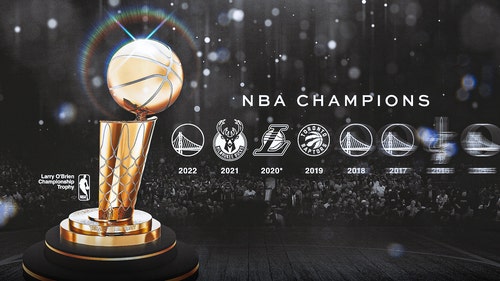
Getting Defensive: Hawks' stingy D unsung key to success

ATLANTA -- Dennis Schroder drove hard toward the rim, the Hawks slender point guard draped by all 6-foot-10 and 255 pounds of Marreese Speights.
Schroder's finger-roll dropped in, while he and the Warriors center came crashing to the Philips Arena floor.
The German import immediately popped up and proceeded to steal Golden State's in-bounds pass and kicked it out to a wide-open Kyle Korver for a 3-pointer.
Sitting at his locker after the Hawks' 121-114 win Friday night, Schroder laughed when asked about the chain of events.
"I can't explain it," he said.
Maybe Schroder can't, but while the 25.9 assists per game -- second in the NBA -- and the barrage of 3-pointers provide the aesthetic appeal, it's the defensive effort that's the underlying explanation to how these Hawks hold an eight-game lead in the Eastern Conference.
"I think over time people will start to see (how good our defense is)," said guard Kent Bazemore. "We just got to keep doing what we're doing."
So far, that's been more than enough.
The Hawks are allowing 96.9 points per game, which is fourth lowest in the league and five fewer than they gave up a year ago in ranking 13th.
They're also holding opponents to lower percentages from the field (43.7, which is fifth) and on 3s (33.7, ranking sixth). A year ago, Atlanta ranked 13th (46.2) and 20th (36.5), respectively, in those categories.
In all, the Hawks are sixth in defensive efficiency (100.2) after sitting 14th (104.1) in 203-14. That turnaround, coupled with a top-six offense that's producing 103.8 per, puts Atlanta second in points differential (+6.9).
"They're really quick. They're quick across the lineup," said Nets coach Lionel Hollins, whose team was held to 41.3 percent shooting in two losses to Atlanta this season. "If you look at their starters, they're probably out-quicking or equal to quickness at every position except for maybe Kyle Korver some nights, but he does a really good job of getting up and being aggressive."
DeMarre Carroll , the self-described "Junkyard Dog" and doer of the dirty work, may stand as the defense's poster boy, but it's Paul Millsap that's tied for second in the league (3.1) in defensive win shares, which estimates the number of victories a player contributes via their D.
With Al Horford 18th (2.4), Jeff Teague 39th (1.9), Carroll 44th (1.8) and Korver 50th (1.7), the Hawks join Golden State -- the NBA leader in defensive efficiency -- as the only team with more than four players in the top 50.
Meanwhile, the offseason acquisitions that were brought in primarily for their defense haven't disappointed as Thabo Sefolosha, has a 1.6 DWS, Bazemore sits at 0.9 and Schroder has broken out to the tune of 1.1 wins via that D.
Activity is the optimum word for Hawks coach Mike Budenholzer when discussing his defense.
It's that push that's helped lead to 8.8 steals a game (fifth), behind Millsap, who is tied for ninth at 1.8 per.
"We kind of keep talking about, as long as we're doing it kind of within the concepts and within the principles," Budenholzer said. "We're really stressing activity and hands and hopefully that's what's leading to some of the turnovers and steals."
Philosophies are key, but it can't be underscored what to the return of Horford has meant.
He was the rim protector the Hawks missed last season as they were 26th in blocks with him playing just 29 games before suffering a torn pectoral muscle. Horford is producing 1.4 per game.
Horford also gives Atlanta another big with the ability to come out and defend perimeter shooters, aiding in the team's most noticeable change from last season.
"Our bigs, they do so much for us defensively," Budenholzer said. "What they do out on the perimeter to help our guards make life more difficult for opposing wins and point guards is to be commended."
During their franchise-record 19-game winning streak, the Hawks led by double figures in every game but one (vs. the Trail Blazers on Jan. 30), a scenario that forced teams to go deep to try and close the deficit.
Atlanta's opponents have attempted 1,323 treys, 69 more than anyone else -- which translates to 25.9 per game -- yet Milwaukee (33.0) is the only East team holding them to a lower percentage.
"I think just our contest and commitment to really making those shots difficult," said Budenholzer. "I'm pretty sure we're actually still probably giving up too many and that's something we don't want to do.
"Teams are shooting a lot of 3s, but their percentages are just not good."
Ideally, Budenholzer doesn't want to see that elevated amount of 3s, but being a byproduct of big leads, the approach is what truly matters.
"I think our contest, and just really commitment to getting a hand up and making it a contested shot, hopefully is affecting the percentages when they do shoot 3s," he said.
Case in point: The Hawks' game against the Warriors, who came into Atlanta as the league's best 3-point shooting team, but didn't leave that way.
Against Atlanta, Golden State went 12 of 33 (36.4) overall but just 2 for 10 in the fourth quarter.
"Defense is effort. It's all about the shots they take, making their team take tough shots," Bazemore said. "We contested a lot of shots, which is a staple in our defense, at least get a hand up."
Budenholzer's dream scenario -- contesting shots and that desired "activity" -- played itself out in one sequence in the first quarter against the Warriors.
Stephen Curry, fresh off his 51-point performance Wednesday vs. the Mavericks, and who ranks third in the league in 3-pointers, took the kick out off an Andrew Bogut offensive rebound.
Curry caught the ball at the top of the key to launch a 25-foot shot instead of resetting the offense, a streak Teague recognized. So Teague ran from the left of the paint blocked and blocked Curry from behind.
The ball fell toward Korver, who plucked it out of the air and fed the point guard for a transition dunk.
"It's a lot of little things that go into being a good defensive team," Budenholzer said. "When we're active, that's when we're at our best defensively."
Teague's block on Curry leading to the Dunk! #hawks https://t.co/6KGAQvn3sn
— NBAonDefPen (@NBAOnDefPen) February 7, 2015
Follow Cory McCartney on Twitter @coryjmccartney








